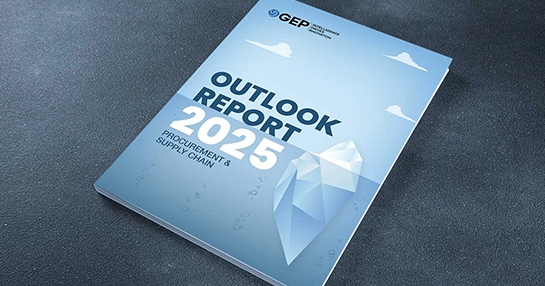
Move Beyond Signatures, Optimize Contract Performance to Get More Value
- High-performing organizations move beyond passive oversight by embedding contract obligations into everyday workflows.
- AI and advanced analytics shift the focus from manual tracking to predictive insights—uncovering risks and surfacing opportunities.
- Performance management is a collaborative effort, where clear ownership, open dialogue, and continuous learning can turn contracts into engines of innovation and strategic value.
April 23, 2025 | Procurement Strategy
What separates organizations that simply execute contracts from those that extract real, measurable value?
The answer lies in contract performance management.
For procurement and contract leaders, the challenge isn’t just ensuring compliance—it’s harnessing contracts as levers for operational excellence, risk mitigation, and strategic growth. This article explores how to move beyond routine oversight to a more sophisticated, value-driven approach.
Making Contracts Work: The Shift from Passive Oversight to Active Management
Many organizations fall into the trap of “set and forget” contract management. Once an agreement is signed, attention drifts until a problem emerges—by which time, the opportunity for proactive intervention has often passed.
High-performing teams take a different approach: they treat contracts as living frameworks, requiring ongoing attention and adaptation.
Active management means embedding contract obligations into daily workflows. This starts with a detailed contract handover process, ensuring that operational teams understand not just the letter, but the intent behind each clause.
Performance metrics are then integrated into regular business reviews, not left to annual audits. This form of continuous engagement enables early identification of risks, bottlenecks, or opportunities for improvement—long before they affect outcomes.
Designing Metrics That Drive Real Improvement
The effectiveness of contract performance management hinges on the quality of its metrics. Too often, organizations default to generic SLAs that fail to capture what truly matters. The most effective metrics are those that are directly tied to business objectives and tailored to the specific context of each contract.
Here are some things to consider for building better KPIs
Strategic Alignment:
Metrics should reflect what the business actually values. For example, in a logistics contract, on-time delivery is important, but so might be innovation in packaging or reduction in carbon footprint.
Balance and Depth:
Relying solely on quantitative measures (like cost or delivery times) can miss underlying issues. Qualitative feedback—such as stakeholder satisfaction or supplier collaboration —adds important context.
Actionability:
Every metric should drive a decision or behavior. If a KPI is missed, there must be a clear process for corrective action, not just a note in a report.
Adaptability:
Businesses need change, and so should metrics. Regularly reviewing and updating KPIs ensures continued relevance and impact.
A well-designed set of metrics doesn’t just track performance; it shapes it. By rewarding innovation, penalizing persistent failures, and encouraging transparency, metrics become tools for continuous improvement.
The Impact of AI on Contract Performance Management
While most organizations have digitized their contract management to some degree, the real transformation in contract performance management comes from the integration of artificial intelligence (AI) and advanced analytics. For experienced leaders, the conversation has shifted from “Can we automate reminders?” to “How can AI unlock value and mitigate risks at scale?”
Automated Data Extraction and Obligation Tracking
AI-powered platforms can extract key terms, obligations, and deadlines from contracts automatically. This eliminates manual review, reduces errors, and ensures that critical milestones are never overlooked.
Predictive Analytics for Risk and Performance
AI analyzes historical contract and supplier data to identify patterns—flagging risks, predicting performance issues, and surfacing anomalies early. This allows teams to address problems before they escalate, rather than reacting afterwards.
Strategic, Data-Driven Decision-Making
With AI-driven insights, organizations can benchmark supplier performance, identify value leakage, and optimize contract terms. Integration with procurement and finance systems ensures these insights inform real business decisions, not just reports.
Focus on High-Value Work
By automating routine monitoring and reporting, AI lets contract managers focus on strategic activities: supplier development, negotiation, and process improvement. The result is a shift from administrative oversight to proactive value creation.
Accountability and Collaboration: The Human Element
Even the best technology and metrics fall short without a culture of accountability. Effective contract performance management depends on clear ownership, regular communication, and a willingness to address issues head-on.
Performance reviews should be more than box-ticking exercises. The most successful organizations treat them as collaborative problem-solving sessions, involving both internal stakeholders and suppliers. This approach builds trust, encourages transparency, and often uncovers opportunities for joint improvement that would otherwise go unnoticed.
Capturing lessons learned is equally critical. Each contract provides valuable insights—about market dynamics, supplier capabilities, and internal processes. Systematically feeding these insights into future contracts creates a virtuous cycle of continuous improvement.
Also Read: Contract Management in Procurement: Maximizing Value and Minimizing Risk
Rethinking the Value of Contracts
When managed with discipline and intent, contracts become more than legal safeguards—they become engines of value creation and strategic alignment. Contract performance management is the discipline that unlocks this potential, transforming obligations into opportunities for innovation, resilience, and growth.
If your contracts aren’t delivering more than the bare minimum, it’s time to ask: what’s missing from your approach? The answer often lies not in the contract itself, but in how it’s managed—day in and day out.



